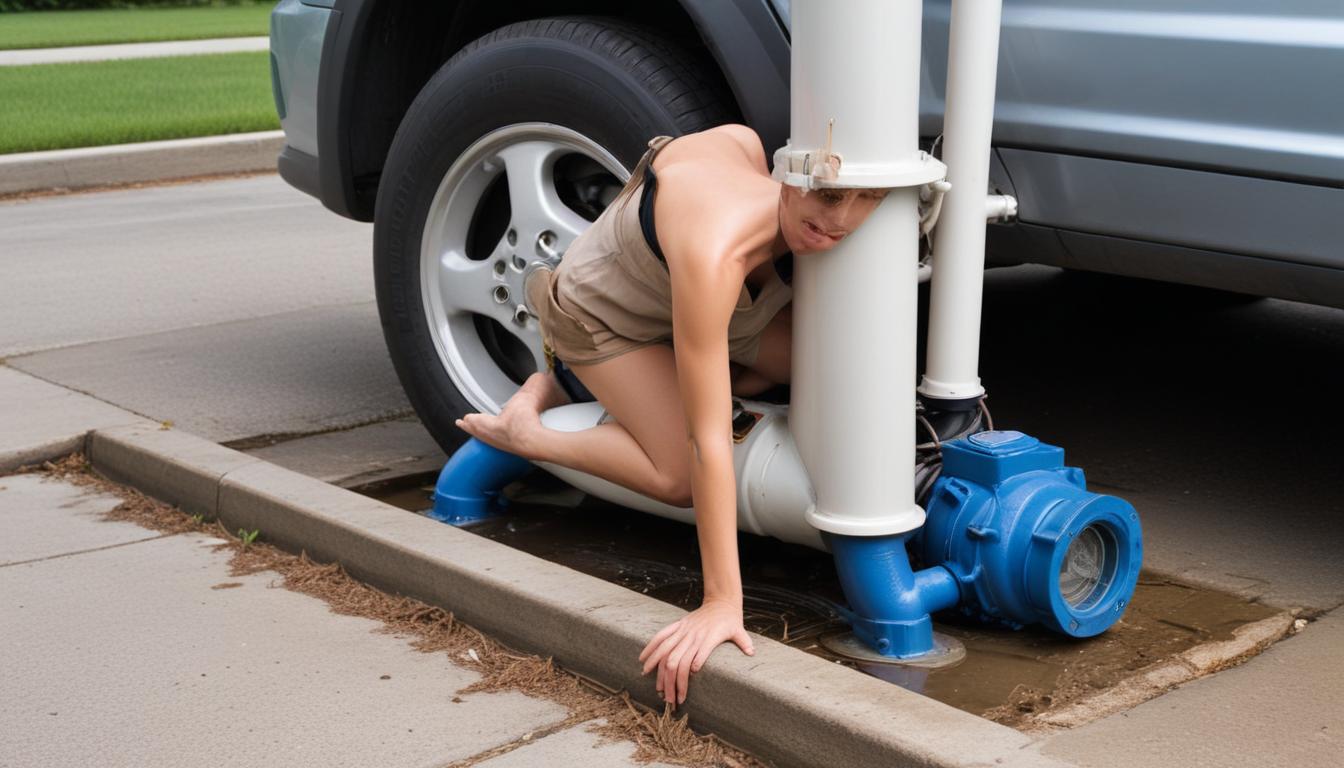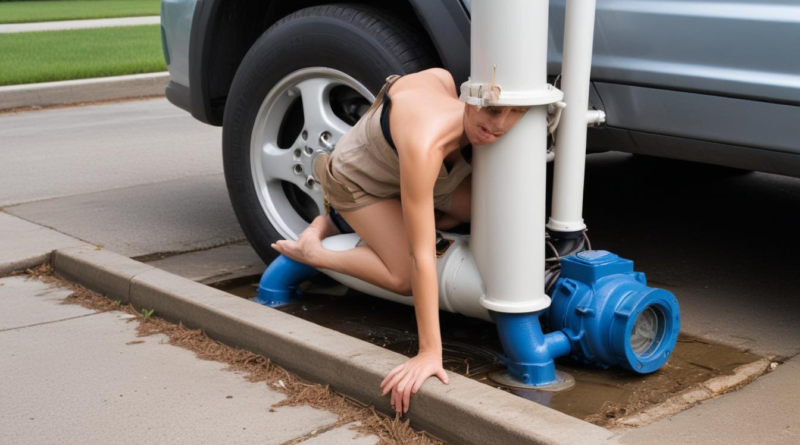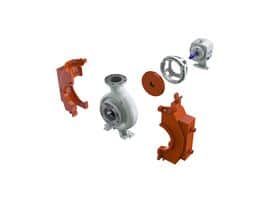how to detect pump leaks
Detecting pump leaks early is crucial to maintaining the efficiency and longevity of your pumping systems. Recognizing the warning signs can prevent costly damages and ensure smooth operations. Below are common indicators that may suggest the presence of a pump leak:
- Unusual Noises: Persistent humming, whistling, or banging sounds can be a sign of leaks affecting the pump’s performance.
- Visible Drips or Puddles: Water or fluid accumulation around the pump area is a clear indicator of a leak.
- Decreased Efficiency: A noticeable drop in pump efficiency or output may result from leaking components.
- Increased Noise Levels: Amplified operational sounds often accompany leaks as the pump struggles to maintain pressure.
- Corrosion and Rust: The presence of corrosion on pump parts can signify long-term leakage issues.
- Unexpected Pressure Drops: Sudden drops in system pressure can indicate leaks within the pump assembly.
- Higher Energy Consumption: Leaks can cause the pump to work harder, leading to increased energy usage.
Visual inspections are a fundamental step in the detection of pump leaks. Regular monitoring can help identify these signs early, allowing for timely interventions. Additionally, maintaining a log of operational parameters can aid in spotting anomalies related to leaks. Implementing these detection strategies ensures that any pump leaks are addressed promptly, maintaining system integrity and performance.
inspecting pump components
Thorough examination of each pump component is essential in the detection and prevention of pump leaks. By systematically inspecting these parts, potential issues can be identified and addressed before they escalate. The key components to focus on include:
- Seals and Gaskets: These are critical in preventing fluid from escaping the pump system. Inspect for signs of wear, cracking, or brittleness. Ensure that seals are properly seated and replace any that show deterioration.
- Connections and Fittings: Check all pipe joints, flanges, and fittings for tightness and integrity. Look for corrosion or damage that could compromise the seal and lead to leaks.
- Impeller and Casing: The impeller should rotate smoothly without obstruction. Examine the casing for any cracks or gaps that might allow fluids to escape. Ensure that the impeller is not worn, as this can affect performance and increase the risk of leaks.
- Shaft and Bearings: Inspect the pump shaft for alignment and signs of wear. Bearings should be free of excessive play and properly lubricated to prevent leaks around these moving parts.
- Base and Foundation: A stable foundation ensures that the pump operates correctly. Check for any cracks or shifts in the base that could lead to misalignment and subsequent leaks.
Visual inspections should be conducted regularly, focusing on the aforementioned components. Additionally, incorporating the following table can help in organizing and tracking the inspection process:
| Component | Inspection Focus | Common Leak Indicators | Recommended Actions |
|---|---|---|---|
| Seals and Gaskets | Condition and placement | Cracks, brittleness, improper sealing | Replace damaged seals and ensure proper installation |
| Connections and Fittings | Tightness and integrity | Corrosion, loose joints | Tighten fittings; replace corroded parts |
| Impeller and Casing | Structural integrity and smooth operation | Cracks, wear, obstructions | Repair or replace damaged impellers/casings |
| Shaft and Bearings | Alignment and lubrication | Excessive play, leaks around bearings | Realign shaft; lubricate or replace bearings |
| Base and Foundation | Stability and alignment | Cracks, shifts | Reinforce or repair the foundation as needed |
Implementing a routine inspection schedule ensures that all components are regularly evaluated, reducing the likelihood of unexpected pump leaks. Maintaining detailed records of inspections can also aid in identifying patterns or recurring issues, facilitating proactive solutions to maintain optimal pump performance.
utilizing diagnostic tools
Advanced diagnostic tools play a pivotal role in the accurate detection of pump leaks. By leveraging these technologies, maintenance teams can identify and address leaks with precision, minimizing downtime and preventing extensive damage. The following diagnostic tools are essential for effective leak detection:
- Infrared Thermography: Utilizes infrared cameras to detect temperature variations caused by leaks. This non-invasive method allows for the identification of leaks in both visible and concealed areas.
- Ultrasonic Leak Detectors: Detects high-frequency sound waves emitted by leaking fluids. These detectors are highly sensitive and effective in noisy industrial environments.
- Pressure and Flow Meters: Monitors changes in pressure and flow rates within the pump system. Unexpected fluctuations can indicate the presence of a leak.
- Vibration Analysis Tools: Analyzes the vibration patterns of the pump. Irregular vibrations may signal leaks or other mechanical issues affecting the pump’s performance.
- Leak Detection Dyes: Introduces fluorescent dyes into the system, which become visible under UV light at the leak site. This method is particularly useful for pinpointing exact leak locations.
Integrating these tools into a comprehensive diagnostic strategy enhances the reliability of pump leak detection. Below is a table outlining the key diagnostic tools, their primary functions, and the benefits they offer:
| Diagnostic Tool | Primary Function | Benefits |
|---|---|---|
| Infrared Thermography | Detects temperature anomalies | Non-invasive; identifies both visible and concealed leaks |
| Ultrasonic Leak Detectors | Detects high-frequency sound waves from leaks | Highly sensitive; effective in noisy environments |
| Pressure and Flow Meters | Monitors system pressure and flow rates | Identifies pressure drops and flow inconsistencies indicative of leaks |
| Vibration Analysis Tools | Analyzes pump vibration patterns | Detects mechanical issues and leaks through irregular vibrations |
| Leak Detection Dyes | Introduces fluorescent dyes to reveal leaks | Pinpoints exact leak locations; effective for precise detection |
Implementing these diagnostic tools requires a structured approach:
- Assessment: Begin with a comprehensive assessment of the pump system to determine the most appropriate diagnostic tools based on the specific application and environment.
- Selection: Choose the right combination of tools that provide complementary data, enhancing the overall detection accuracy.
- Calibration: Ensure that all tools are properly calibrated to guarantee reliable measurements and accurate leak detection.
- Data Analysis: Collect and analyze the data systematically to identify patterns or anomalies that indicate the presence of leaks.
- Integration: Integrate the findings into the maintenance schedule, prioritizing repairs based on the severity and location of detected leaks.
Regular use of these diagnostic tools not only aids in the early detection of pump leaks but also supports proactive solutions that enhance the overall efficiency and lifespan of pump systems. By adopting a technology-driven approach, organizations can maintain optimal pump performance and reduce the risks associated with undetected leaks.
conducting pressure tests
 Conducting pressure tests is a fundamental method in the detection of pump leaks. By evaluating the pressure levels within the pump system, maintenance teams can identify irregularities that may indicate the presence of leaks. This process involves several key steps and considerations to ensure accurate and reliable results.
Conducting pressure tests is a fundamental method in the detection of pump leaks. By evaluating the pressure levels within the pump system, maintenance teams can identify irregularities that may indicate the presence of leaks. This process involves several key steps and considerations to ensure accurate and reliable results.
Types of Pressure Tests:
- Hydrostatic Testing: Involves filling the pump system with water to a specified pressure level to check for leaks. This method is effective for identifying leaks in both visible and hidden areas.
- Pneumatic Testing: Utilizes air or another gas to pressurize the system. While quicker than hydrostatic testing, it requires careful handling due to the compressibility of gases.
- Integrated Pressure Testing: Combines elements of both hydrostatic and pneumatic testing to provide a comprehensive assessment of the pump system’s integrity.
Implementing pressure tests effectively requires a structured approach. The following table outlines the key aspects of each type of pressure test:
| Pressure Test Type | Method | Advantages | Considerations |
|---|---|---|---|
| Hydrostatic Testing | Uses water to pressurize the system | Non-compressible medium; safer for detailed leak detection | Requires drainage and handling of water post-test |
| Pneumatic Testing | Uses air or gas to pressurize the system | Faster setup; useful for preliminary checks | Higher risk due to gas compressibility; requires stringent safety measures |
| Integrated Pressure Testing | Combines water and gas pressurization | Comprehensive leak detection; adaptable to various system configurations | More complex setup; requires expertise in both testing methods |
Steps to Conduct a Pressure Test:
- Preparation: Ensure the pump system is shut down and safely isolated. Drain any existing fluids and verify that all connections are secure.
- Choose the Appropriate Test Type: Select the pressure test method that best suits the system’s requirements and environmental conditions.
- Pressurize the System: Gradually apply pressure using the chosen method, monitoring closely for any signs of leakage.
- Monitor Pressure Levels: Maintain the specified pressure for a predetermined period, observing any drops that may indicate a leak.
- Inspect for Leaks: Conduct a thorough inspection of all components, fittings, and seals while the system is under pressure.
- Depressurize Safely: Once testing is complete, carefully release the pressure and return the system to its operational state.
Best Practices for Pressure Testing:
- Regular Testing: Incorporate pressure tests into routine maintenance schedules to ensure ongoing system integrity.
- Use Appropriate Equipment: Utilize calibrated pressure gauges and reliable testing tools to obtain accurate measurements.
- Safety Precautions: Adhere to all safety guidelines, especially when conducting pneumatic tests, to prevent accidents.
- Detailed Documentation: Record all test results, including pressure levels, duration, and any detected leaks, to track system performance over time.
- Qualified Personnel: Ensure that only trained and experienced technicians perform pressure tests to maintain accuracy and safety.
Integrating pressure tests into the overall leak detection strategy provides a proactive solution for maintaining pump system integrity. By regularly assessing pressure levels and promptly addressing any discrepancies, organizations can minimize the risk of pump leaks, enhance system reliability, and extend the operational lifespan of their pumping equipment.
implementing maintenance practices
Proactive maintenance is essential in preventing and addressing pump leaks. By implementing a comprehensive maintenance program, organizations can ensure the reliability and efficiency of their pumping systems. The following strategies outline effective maintenance practices to mitigate the risk of leaks and enhance overall pump performance:
- Scheduled Inspections: Establish a routine inspection schedule to regularly assess the condition of pump components. Consistent monitoring helps identify wear and tear early, allowing for timely interventions.
- Preventive Maintenance: Perform preventive maintenance tasks such as cleaning, lubrication, and tightening of fittings to maintain optimal pump functionality and prevent leaks from developing.
- Component Replacement: Replace worn or damaged parts promptly. Utilizing high-quality replacement components ensures the integrity of seals and connections, reducing the likelihood of leaks.
- Lubrication: Regularly lubricate moving parts to minimize friction and wear. Proper lubrication extends the lifespan of bearings and shafts, preventing leaks associated with degraded components.
- Alignment and Balancing: Ensure that pump shafts are properly aligned and balanced. Misalignment can cause undue stress on seals and gaskets, leading to potential leaks.
- Environmental Control: Maintain a clean and controlled environment around the pump area. Reducing exposure to corrosive substances and contaminants helps preserve pump components and prevent leak-related damage.
- Training and Documentation: Train maintenance personnel on best practices for pump care and leak detection. Maintain detailed records of all maintenance activities to track system performance and identify recurring issues.
Implementing these maintenance practices requires a structured approach. The table below outlines key maintenance tasks, their recommended frequency, and the specific benefits they provide in preventing pump leaks:
| Maintenance Task | Frequency | Benefits |
|---|---|---|
| Scheduled Inspections | Monthly | Early detection of wear and potential leak sites |
| Preventive Maintenance | Quarterly | Maintains optimal pump performance and prevents deterioration |
| Component Replacement | As Needed | Ensures integrity of pump seals and connections |
| Lubrication | Weekly | Reduces friction and prolongs the lifespan of moving parts |
| Alignment and Balancing | Bi-Annually | Prevents undue stress on seals and minimizes leak risks |
| Environmental Control | Continuous | Protects pump components from corrosive and contaminating agents |
| Training and Documentation | Ongoing | Enhances maintenance effectiveness and facilitates leak detection |
Best Practices for Maintenance Implementation:
- Develop a Maintenance Plan: Create a detailed maintenance plan tailored to the specific requirements of your pump systems. Include all necessary tasks, frequencies, and responsible personnel.
- Use Quality Parts and Tools: Invest in high-quality components and reliable tools to ensure effective maintenance and reduce the risk of introducing new leaks during repairs.
- Monitor Performance Metrics: Track key performance indicators such as pressure levels, flow rates, and energy consumption. Anomalies in these metrics can signal the presence of pump leaks and other issues.
- Implement a CMMS: Utilize a Computerized Maintenance Management System (CMMS) to organize and schedule maintenance activities, track work orders, and maintain comprehensive records.
- Conduct Regular Audits: Periodically review maintenance procedures and outcomes to ensure compliance with best practices and identify areas for improvement.
By integrating these maintenance practices into the overall management strategy, organizations can effectively prevent pump leaks and ensure the long-term reliability of their pumping systems. Regular maintenance not only addresses existing issues but also anticipates potential problems, enabling swift solutions that maintain system integrity and performance.




